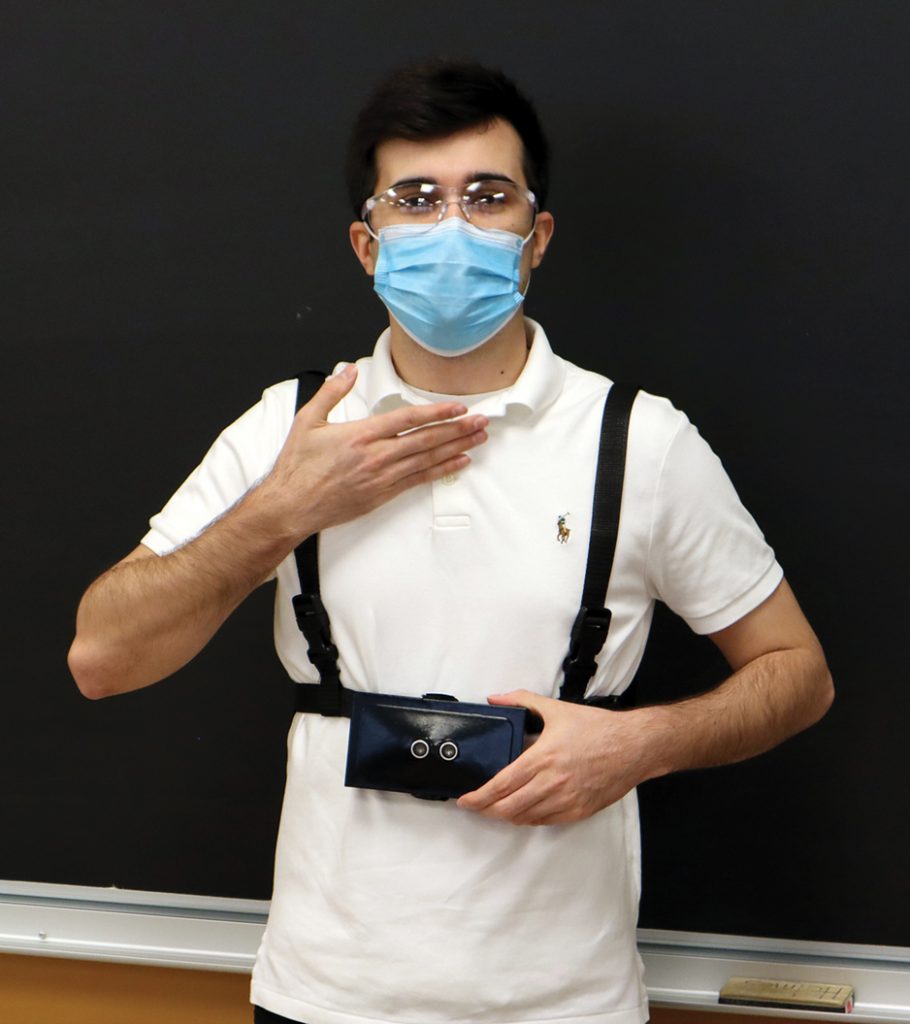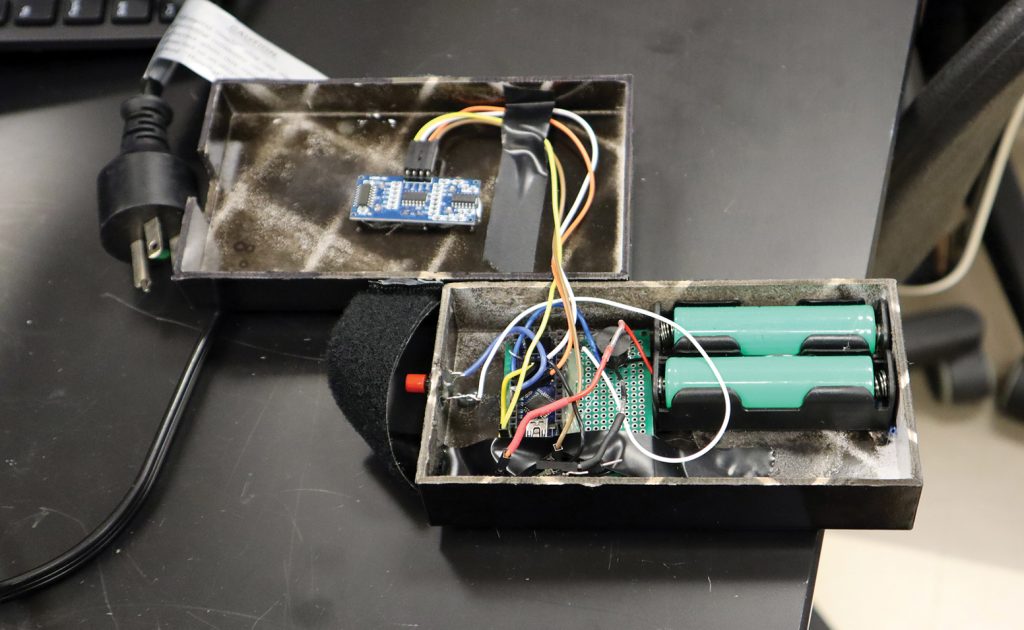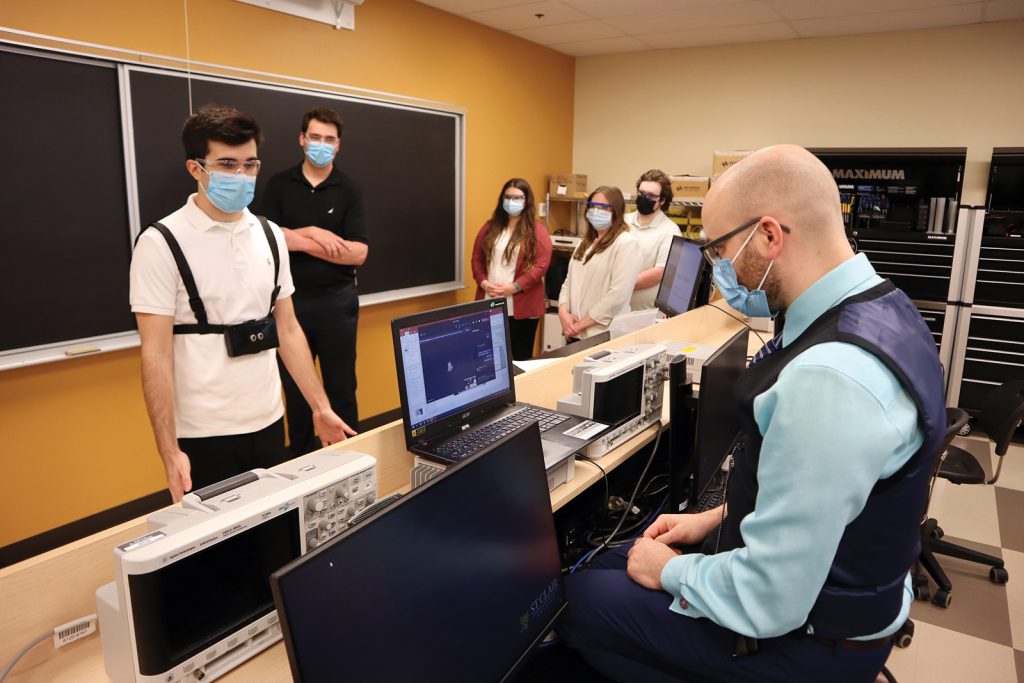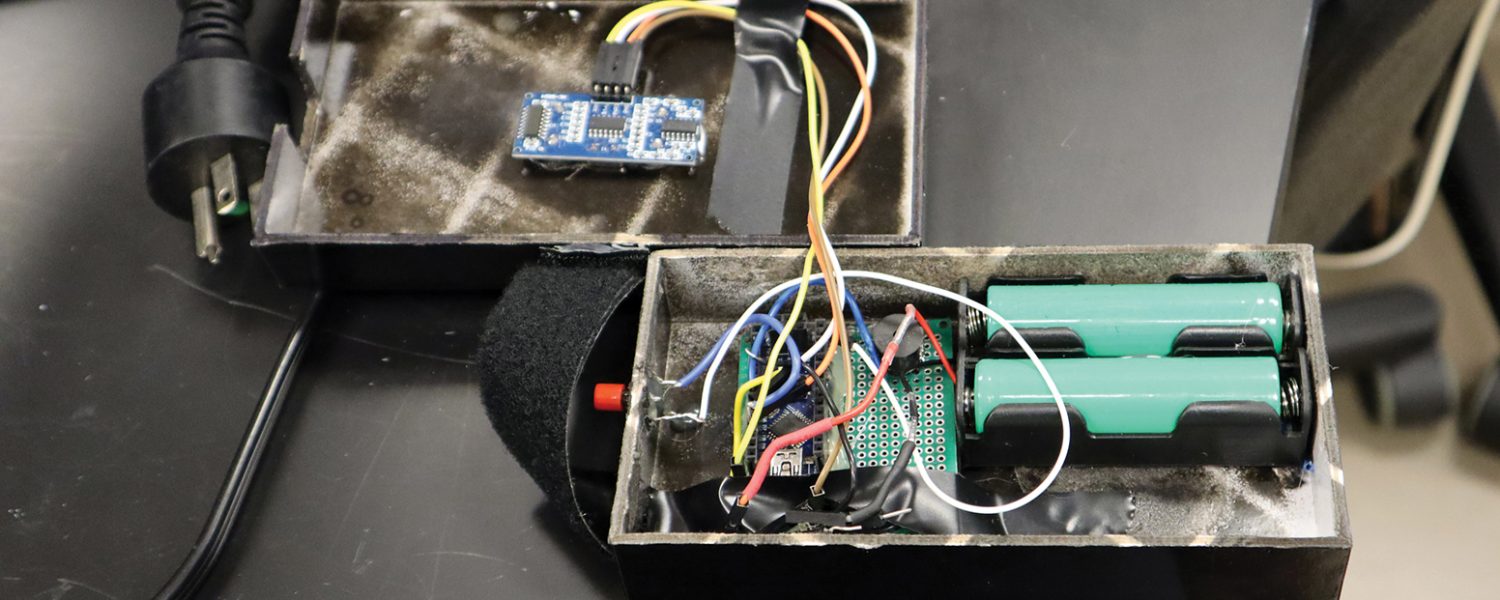St. Clair College Students
Develop Hearing Device
Story by Michael Seguin
Photography by Todd Shearon
Windsor has always been a phenomenally innovative community. Award-winning breweries and distilleries. Nationally and internationally acclaimed artists. World-
renowned media companies. Actors and filmmakers as far as the eye can see.
And, of course, inventors.
Bryce McGregor is a recent graduate of St. Clair College’s Biomedical Engineering Technology program. A former resident of Amherstburg, he currently resides in London where he is embarking on a student placement at University Hospital.
“My older brother took the Biomedical Engineering Technology program as well,” Bryce explains. “I used to look over his projects whenever he would bring them home. Coming out of high school, I wasn’t exactly sure what I wanted to do. But I ended up taking an interest in what he was doing.”
And the program, despite the intimidating title, is really about keeping the wheels of the medical industry greased and running smoothly.
“No one really understands what we study,” Bryce states. “And it is a relatively new program. It’s only been offered at St. Clair for the last five or six years. But basically, we’re in charge of doing repairs and maintenance for every possible medical device in a hospital or clinical setting.”
According to Bryce, the need for these roles is higher than one might think.

“We impact a lot of people,” Bryce explains. “Obviously, we are not doctors or nurses. But without these devices, a lot of what they do wouldn’t be possible.”
And for all his assertions, Bryce’s work may just have impacted more people than he thought.
For one of his major assignments in the program, Bryce and his teammates—Keagan McGeen, Colin Michon, Quinn Fazekas, Sarah Williams, Brianne Morency and Caitlin Vanderkwaak—decided on an ambitious project.
“I was put in a group of six students,” Bryce recalls. “We were told to focus on
a disease or medical condition and create a device that could make the lives of those
afflicted a little easier. So, something to treat their condition or help monitor it.”
After initially playing around with the idea of prosthetics, Bryce and his team ended up creating a sensor to help the visually impaired.
“We spent a couple weeks researching what we were going to do,” Bryce reports. “Then, we moved into basic design schematics. We narrowed down what components were going to go where. We wanted to get everything organized before we dove right into it.”
Once the design was finalized, Bryce’s team ordered all the necessary parts required.
“COVID presented some difficulties with shipping,” Bryce states. “But once everything came in, we spent a long eight weeks putting it all together and troubleshooting. There were definitely a couple headaches along the way! That said, the actual construction of the device was the most fun part of the process. We ended up getting it to do exactly what we wanted to do.”
In terms of hurdles, the realities of 2021 made logistics and communication an issue.

“We were a little restricted because of the pandemic,” Bryce explains. “We were only able to be in the lab one day a week, instead of four days a week. If we wanted to coordinate anything extra, it had to be over Zoom or a phone call. There were so many different moving parts of this project. We all had to work on different components at home.”
In addition, getting all the different pieces of technology to cooperate was a challenge of its own.
“Having different components built and then function the way they were supposed to was difficult,” Bryce states. “The first time we put everything together, it didn’t work. Somehow. Even though everything worked individually! Troubleshooting the connectivity between all the different features was hard.”
The device is an ultrasonic sensor for the visually impaired, worn in a harness around the chest. When the wearer approaches an obstruction in their surroundings, the device produces an audible alarm. If the user comes closer to said obstruction, the device emits a second and third tone.
“The whole thing is battery charged,” Bryce reports. “It runs on 3.7 lithium batteries. It can usually last up to a full day of use. We’ve also built a charging station for the device.”
Bryce and his team headed in their assignment during the final week of April.
Although they were all impressed by the work they had done, they did not expect the feeling to be reciprocated on such a grand scale.
“We expected to hand it in, do our presentation, get our mark and go on our way,” Bryce explains. “We knew the product was good. But we didn’t expect to get the recognition that we did.”
St. Clair College, itself, reached out to Bryce’s teammates for a feature on the college website. As well, the Canadian Broadcasting Corporation (CBC) wrote an article on the device itself.

“The device has been picking up interest,” Bryce states. “Which is really nice to see! The stories shed a little bit of light on us as people, but they also spotlight the program! It’s really nice to see the program getting the recognition that it deserves.”
Although each member of the group has graduated—and many have embarked on future projects—they still have several irons in the fire when it comes to how to improve their device.
“We never really thought about doing anything more with it after we handed it in,” Bryce admits. “But, after seeing all the attention the project has been getting, we’ve been considering our future plans. There were things we wanted to do with the device that we couldn’t, just because of time or resources. There are a few little tweaks and upgrades that we would like to make.”
Some of these new features include adding new sensors for a full 360-degree radius and replacing the audible alarms with buzzers for greater accuracy.
And ultimately, Bryce credits his program with the creation of the device.
“I hope this device brings more recognition to our program,” Bryce stresses. “To the kids who are coming out of high school and aren’t really sure what they want to do, but would love to get our hands on stuff, I think they would love the program!”




Add comment